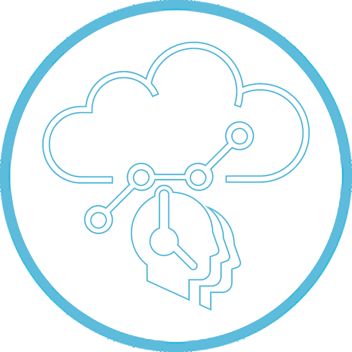Future of Call Centers: AI/Sentiment Analysis and Call Transcription
Contact centers are a critical part of the customer experience. They have been integrating more channels into their functionalities as technology advances. These technological advances include artificial intelligence (AI) and machine learning (ML), sentiment analysis, and call transcription to make the customer experience more efficient and effective, as well as streamline processes for employees and customers alike. In this post, we will dive deeper into AI and sentiment analysis, call transcription, and how these aspects are helping to modernize contact centers and get the most out of them.
Contact center analytics can run into issues when deciphering and understanding each customer’s call. When contact centers use AI and other software, they must analyze the data coming in, understand what is being said, and precisely what they mean.
Many businesses are subpar when it comes to ascertaining customer sentiment thoroughly. Using surveys or even focus groups with modern customers is no longer enough. There are many types of customers, and businesses should focus on more than just one type of customer or one population.

Contact centers are uniquely positioned to use AI technology to gather meaning and context from every customer interaction. Contact center managers and customer service leaders have valuable physical data to learn more about their customers with sentiment analysis and call transcription.
What is Sentiment Analysis?
Sentiment analysis assesses algorithms that analyze conversations between a business and its customers. It detects and understands spoken words, specific phrases, gaps in dialogue, and tone of voice to understand the customer experience for a particular company. It assesses a customer’s perception and determines if the interaction is positive, negative, or neutral to the service taking place. Instead of performing conventional methods like customer surveys, AI-powered sentiment analysis can help businesses understand the intentions of prospective, new, or existing customers. AI is helping to advance, accelerate, and automate many traditional customer service processes.
In a study by Market Research Future, the global Sentiment Analytics market isMarket Research Future, the global market for Sentiment Analytics is expected to reach $6 Billion by the end of 2023. With trends like this, contact centers should be shifting focus to implementing Sentiment Analysis for their business processes soon.
AI-Based Sentiment Analysis Using Call Centers
Call automation can be completed by utilizing AI within contact centers, and sentiment analytics can work effectively. Through sentiment analysis, managers and team leaders can gather deeper perspectives from clients, understand client expressions and any issues regarding company products and services, gauge expectations, and find the appropriate solutions. Most businesses desire to know customer sentiment and must work hard at it. AI as a tool makes this job much easier and faster.
Benefits of AI-Powered Sentiment Analysis for Call Centers
#1. Assess Agent Performance
Contact center representatives are critical in achieving this information when interacting with customers. When going through so many calls in a single day, it is nearly impossible for an agent to know the true intentions of every customer. Sentiment Analysis is a branch of speech analytics that can be integrated into customer service and automatically decipher and evaluate the conversation through the call.
With sentiment analysis, managers can track agent behavior toward customers. You will be able to determine how they handle customers, how well they empathize with and understand customers, and if they continue repeating the same mistakes. An agent’s most vital and weakest points can be determined, and appropriate training can be administered.
#2. Personalize Customer Interactions
Agents can solve customer problems much faster if they know their caller’s intent and feelings. AI utilizes a dynamic database that can help representatives understand customer sentiments. The agent can earn a customer’s trust by being empathetic and adequately communicating. Managers can step in to support a customer should a conversation indicate the need for higher-level service.
#3. Build a Strong Reputation for Your Business
Call centers can use sentiment analysis to pass along knowledge of the overall customer experience. Your marketing team can use this data to target specific demographics, geographics, income levels, or marital statuses.
Sentiment analysis can also provide an evaluation of your ongoing marketing campaigns. The feedback of your marketing campaign can be evaluated throughout your customer calls and interactions. All other business processes can then be modified based on this information and customized to the customer’s needs. With this, successful business reputations can be maintained and even enhanced.
#4. Manage Business Processes Automatically
Business process automation is a rising trend in businesses too. With sentiment analysis, workforce management planning can be done efficiently and effectively. For instance, it can predict and categorize customers more likely to purchase products. If the call volume of a specific category of customers is higher during the day, then managers can deploy top agents during that time frame.
Another tactic companies use to strengthen customer relationships and experiences is call transcription. This helps to create physical data for training and customer service-related tasks. Below, I'd like you to dive deeper into call transcription and why it is essential for contact centers.
Call Transcription
Phone calls are the most common interaction between contact centers and consumers. Having transcriptions of these calls allows team leaders and managers to review call contents, assess the overall delivery of service, and enable legal departments to track compliance. Call transcription can be an essential part of an organization’s business processes. But how do you get all of the benefits from call transcription?
Contact centers have hundreds or even thousands of interactions every day. Each of these interactions has value and can determine the quality of the customer-company relationship. By analyzing these interactions, your organization can gather necessary knowledge about the market, changes in the market, and customer preferences.
What is Call Transcription?
Call or voice transcription is the act of converting a conversation into text that physically shows, in writing, the words that were spoken during the conversation. It converts unstructured data into structured data to further understand the content of the interaction.
When sentiment analysis and call transcription are used together, a business can extract valuable, relevant information. This provides deep insights into interactions between customers and call center agents.
What are the Benefits of Call Transcription?
Call transcription has multiple benefits for a contact center. It enables organizations to easily access data to support customer and agent needs. Businesses can enhance customer services and boost core performance by using data gathered through voice transcriptions. Call transcription also allows you to determine the following:
#1. Customer satisfaction
Track repetitive themes, trends, and popular topics.
#2. Competitive intelligence
Develop specific products or services when customers ask for them.
#3. Identify under-performing agents
Easily view where improvement is needed and create an agent training plan by showing them desired strategies. This allows your team to create a step-by-step plan or process that uses the best agent performances as an example for the whole team.
While AI-powered sentiment analysis and call transcription are just two trends to look out for when interacting with contact centers and customer service teams, it is crucial to understand that both are being utilized to perfect the customer experience better or even. Future contact centers are trying to become more convenient, helpful, and customer-oriented.





%20(1).jpg?width=352&name=arlington-research-kN_kViDchA0-unsplash%20(2)%20(1).jpg)